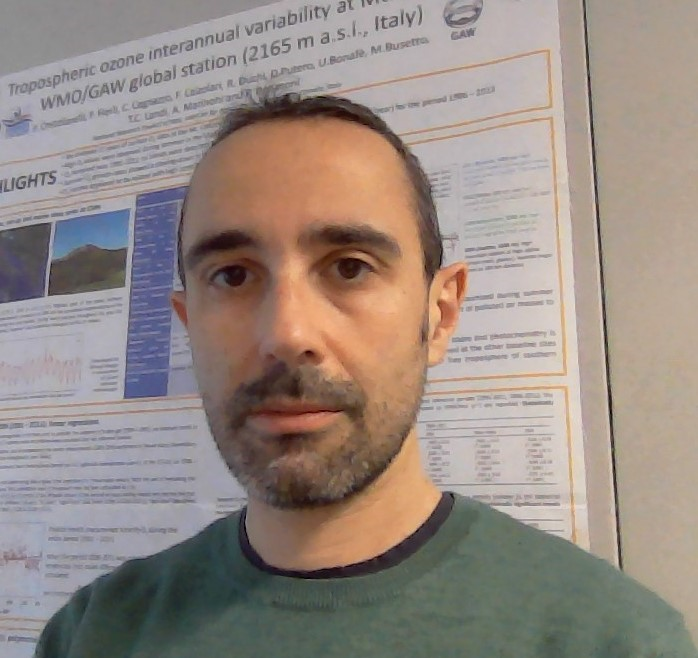Seminário
Quinta-feira, 8 de Abril, 14:30
Doutoramento em Ciências da Terra e do Espaço
Earth Remote Sensing Laboratory (EaRSLab)
Instituto de Ciências da Terra
Paolo Cristofanelli, Principal Investigator at the Institute of Atmospheric Sciences and Climate (CNR-ISAC), Bologna, Italy

Link zoom: https://videoconf-colibri.
Abstract:
The changes in atmospheric composition driven by anthropogenic emissions represent the driver of the observed climate change. In this seminar, the activities carried out at the global WMO/GAW station Mt. Cimone (2165 m a.s.l., Italy) related to the observations of climate-altering trace gases, will be introduce.
The first part of the seminar deals with the measurement site together with a brief description of the international frameworks to which these observations are contributing. In particular, the Integrated Carbon Observation System (ICOS-RI), the European Research Infrastructure devoted the investigation of the carbon cycle (see www.icos-ri.eu), will be presented. The quality assurance program adopted for the atmospheric observations of carbon dioxide, methane and carbon monoxide will be described. Then, hints will be provided about the role of in-situ atmospheric network in disentangling specific atmospheric phenomena (e.g. the perturbation of the carbon cycle during heatwave events like that occurred in summer 2018) or in providing science services (e.g. the monitoring of greenhouse gas emissions).
In the second part of the seminar,scientific results related with the investigation of other climate-altering trace gases at Mt. Cimone will be discussed. In particular, a description of the decadal variability of near-surface ozone and the role of synoptic-scale air mass circulation will be provided. Finally, recent evidences about the possible impact of reduced precursor emissions related to COVID-19 restrictions to the appearance of evident negative ozone anomalies during 2020 at this high-mountain measurement site will also be discussed.
